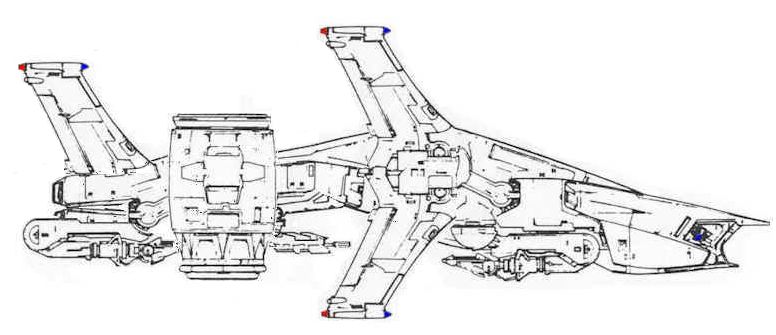
TECHNICAL DATA
AERIAL ST- MODEL A14 TYPE 1400ec SERIES 990
________________________________________________________________

PRODUCT IMPROVED DESIGN (PID) OF A4 FEATURING ENHANCED NOE AND LOITER CAPACITY.
ENHANCED SIDE LOOKING AND DOWN LOOKING SENSORS FOR TARGET SEARCH-TRACK-DESTROY CAPABILITY.
SKYNET's dated A4 series was rapidly becoming obsolete. its electronics were dated, and could be fooled by countermeasures invented by the Resistance. Once the A4 had been blinded, it was easy prey for the more advanced and heavy, high energy direct fire weapons which the Resistance started to field in the middle stages of the War. SKYNET needed a new design, a more up to date design, but still something small, easy to manufacture, and effective.
The A14 was the answer,
being a
redesigned A4 with more powerful weapons, more powerful engines, and a
lighter, stronger
frame. The electronics were upgraded as well, giving rise to the
characteristic 'dog
tail' that became prevalent in the later generation of Aerial
units. The
A14 employed a reverse claw landing system (two claws rear, one
forward) and much of its
mass was situated in the tail assembly, giving it balance near the
engines. A single
powered mount on the ventral fuselage held a twin heavy plasma gun in a
single mount.
Forward in the nosecone, to each side of the navionics, were a
pair of smaller, but
more rapid fire phased plasma guns, four in all, giving the A14 more
striking capacity
than the model it replaced. VTOL capacity and hover were
retained, but the dual wing
format allowed the A14 to obtain higher speeds, making it able to reach
farther away to
distant patrol zones and to provide protection and interception
there. The A14 was
produced in greater numbers during the end of the War, even more so
than the A4 was and became SKYNET's premiere close air support unit,
often operating in groups of
four responding to an A5 or a Centurion on the ground.

LATE MODEL REFINEMENT OF THE MODEL A4 - PRODUCT IMPROVEMENT DESIGN
REAR VERTICAL CONTROL SURFACES RE-ADDED FOR FURTHER IMPROVEMENT.

LATE MODEL REFINEMENT OF THE MODEL A4-PID - "Long Nose" VARIANT - LARGER FRONTAL
LAST PRODUCTION VERSION OF A4 MODEL BEFORE THE SECOND GEN AERIAL HK ENTERED SERVICE
____________________________________________________________

GEN
II AERIAL HK
________________
A somewhat improved model of Aerial that was a bridge between the Gen I and the later, much more effective Gen III models. The Gen II Aerial HK has more power from a more efficient onboard reactor, a higher order of processing power through Gen II electronics, heightened sensors and scanners with superior side and look-down tracking with greater arcs of coverage, higher speed due to improved hyperfan design and greater stability due to an active flight control system that includes an additional pair of snub wings for stabilization, especially at low speeds. A slight increase in armor, especially around the sensors, makes this Aerial much harder to kill than the Gen I models. Armament remains the same, a gimbal mounted rapid pulse phased plasma gun that tucks up on a motorized gimbal mount and has a traverse or slew rating of better than 180 degrees per second. The deflection of the plasma gun was also improved allowing it to fire almost straight down. A Gen II-A model featured an upgraded rapid pulse phased plasma gun with a longer barrel and greater stutter pulse output for a much higher rate of fire.
GEN III AERIAL HK
________________

Gen III Aerial HK, far more advanced than the Gen I and more advanced than the Gen II model. The Gen III is much sleeker, almost shark-like and just as predatory. It has even more sophisticated and advanced electronics than the Gen II Aerial and incorporates both a higher output rapid pulse phased plasma gun in an underslung universal gimbaled mount, as well as two forward rapid pulse, phased plasma guns in the front fuselage with limited gimballing (45 degree traverse on universal ball mount), allowing the Gen III to both strafe ground targets as well as direct fire forward, to the sides, to the rear and in a hemisphere below it.
_____________________________________